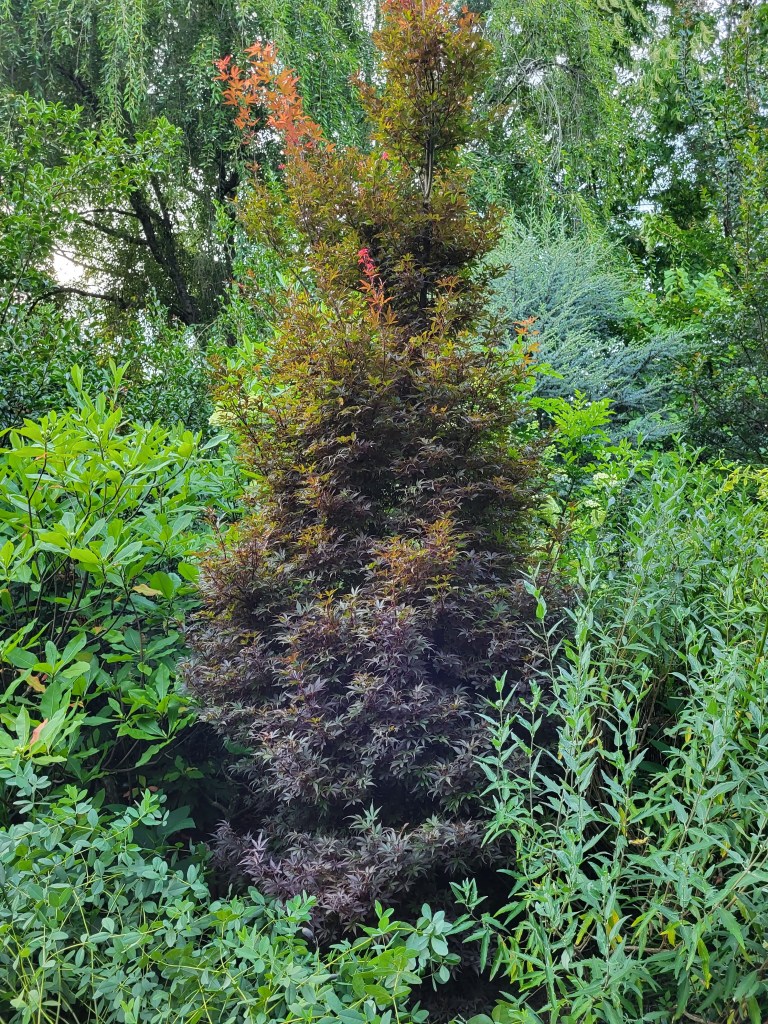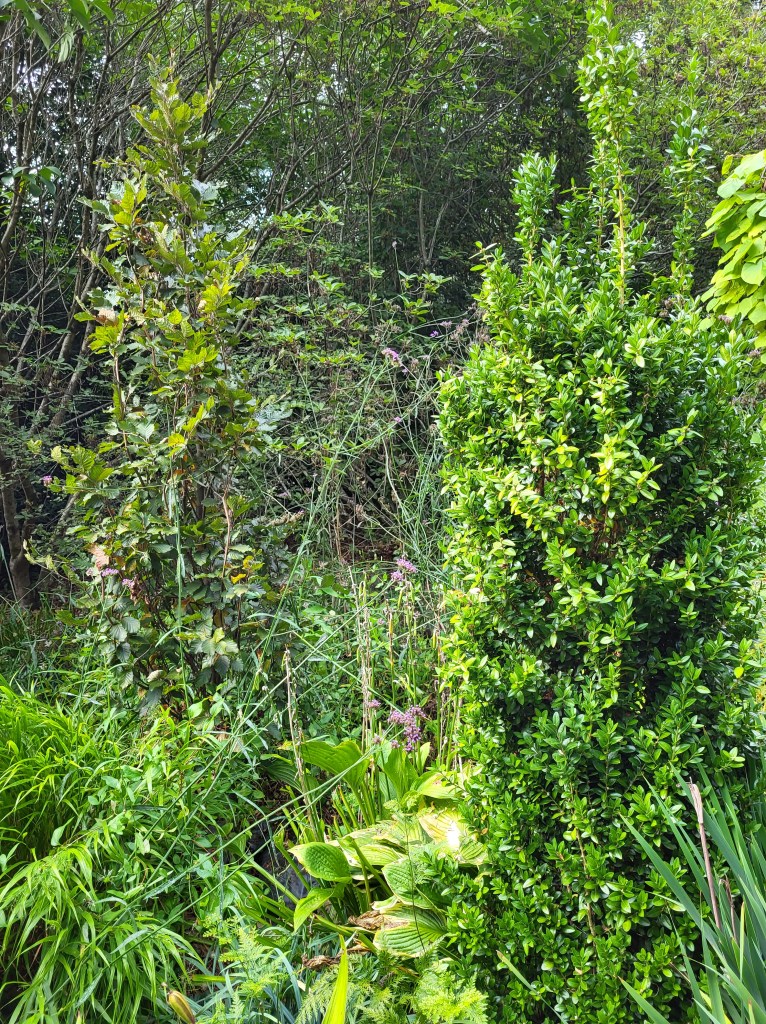Stand up straight, and mind your manners. Of course, my mother found these admonitions unnecessary when I was a perfectly behaved kid, but still I am reminded with each tree that I consider adding to this already overcrowded garden. I need well behaved trees that also stay narrow.
In a small garden, or one already stuffed with too many plants, trees must be carefully selected. I am only occasionally careful, but at least aware of the potential for problems as trees spread their canopies. While I’ve gone back and forth figuring spots for a ‘Carolina Sweetheart’ redbud and ‘Moonrise’ Japanese maple to be planted once we get back on track with regular rainfall, I hardly have to consider the location when a narrowly columnar tree is available.
In recent years, I’ve added several narrow, upright growing trees. Nothing else will fit, or at least no other wider spreading trees can be fit in without pretending that someday they won’t grow into their neighbors. This is rarely a problem, but I can’t push it too far. The columnar shape is called fastigate, and while this description is sometimes applied to trees growing with more broad, upright oval forms, others have rigidly upright branching.
Soon to be delivered is a small Chinese toon (Toona sinensis), a tall and narrow tree that might someday be a bit too tall for the spot in the lower, rear garden, but its upright branching should work wonderfully in this space. It’s possible that I’ll keep it pruned to a lower height, but that part doesn’t need to be worked out for a few years.

While my appetite for Japanese maples has not waned, I must be aware of the space that they require. I’ve planted a few that will mature only at six feet or so (but also six feet wide or more), but after several years the best of the recent additions is the columnar growing ‘Twombly’s Red Sentinel’ (Acer palmatum ‘Twombly’s Red Sentinel’, above). It has grown quickly in a space where the upright, red leafed accent was well suited, and its very upright form is just right for the spot. It has grown surprisingly fast.

A columnar, purple leafed beech (Fagus sylvatica ‘Red Obelisk’, above) planted beside the greenhouse is faring well through our summer drought despite showing considerable stress a year ago. The beech is on the northwestern side, so it will not obstruct sunlight to the greenhouse. In fact, during the summer, blocking some sunlight to the very hot greenhouse wouldn’t be such a bad idea, but the sunlight is necessary through winter and spring when seeds and cuttings are growing. Amongst the chaos of rampant toad lilies (Tricyrtis) and Verbena bonariensis sprawling about, the columnar form of the beech and a nearby boxwood lend some order.

Just below, between the greenhouse and summerhouse, a columnar ‘Cupressina’ spruce (Picea abies ‘Cupressina’, above) rises above a colorful mishmash of orchids (Bletilla striata), hellebores, pineapple lilies (Eucomis), and a carpet of Creeping Jenny (Lysimachia nummularia ‘Aurea’). The columnar spruce will slowly rise above this tumult to mirror the beech on the far side of the greenhouse.

While the native fringetrees (Chionanthus virginicus) add a short period of splendid, lacy white blooms in spring, the broadly columnar Chinese fringetree (Chionanthus retusus ‘Tokyo Tower’, above) flowers less dependably in this garden. I must figure out why it flowers every other year, though it grows vigorously, and its upright branching stands up against the spread of two paperbushes (Edgeworthia chrysantha). This fringetree is one that is questionably columnar. The upright branching is evident, but the tree is broadly upright. In any case, if it can fend off the relentless spread of two paperbushes, I’m happy to have it.
Two other columnar Japanese maples in the lower, rear garden have not grown enough to make much of a show, but both were chosen for this form and I expect them to one day be glorious additions to the collection of Japanese maples. I know, how many times can I say there’s no room, only to add another tree or two? Perhaps I will soon reach the end point of shoehorning new trees into the garden, but with narrow, upright trees there’s at least a chance for more.